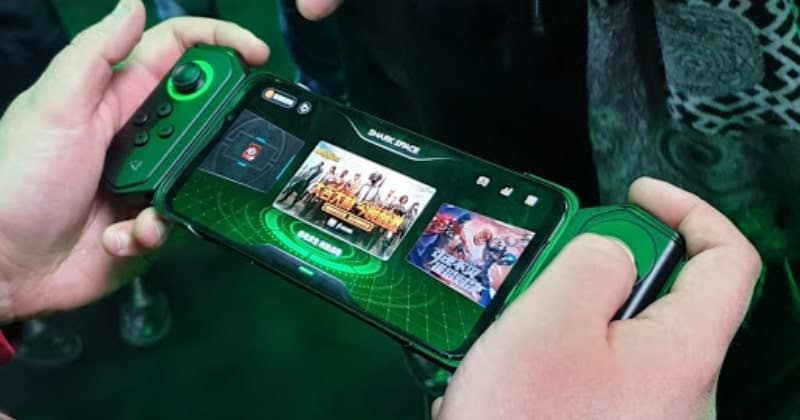Xiaomi’s set to launch its new gaming smartphone on March 3rd this year. The all-new Black Shark 3 may have wonderful features which aren’t officially announced, but a new video of its testing reveals the handset featuring a super cool high-end feature – 270Hz display!
The Black Shark series is a wonderful competitor in gaming phone segment, going against the likes of Asus, Nubia, Razer etc. The Black Shark 3, if priced as its predecessors, can definitely beat other gaming handsets in the market. Black Shark series (both 1 and 2) are much liked by the community due to their high-end features at a low price. And here’s yet another one feature, which isn’t available in any other phone in the market now.
A 270Hz Refresh Rate?

A video from Twitter showed the new Black Shark 3’s refresh rate test against iPhone 11 Pro, OnePlus 7T Pro, ROG 2 and Oppo’s Reno Ace.
The sample is trailed on PUBG, where the target was shot in various displays. Eventually, Black Shark 3’s response was immediate and amazing. The post read,
“BlackShark3 broke through again, raising the touch sampling rate to 270Hz. The single-finger touch latency was reduced to 24ms, and the multi-finger touch latency was reduced to 28m.”
Other leaks
Considering the recent partnership with Tencent, Xiaomi may be launching its new offering as Tencent Black Shark 3, as Tencent being the maker of PUBG, which is a popular game among smartphones. Further, the phone’s said to be running on. Snapdragon’s 865 SoC, the latest chip which has 5G support. It’s even listed on 5G certification platforms, confirming the new chip within.
It may have a 5000mAh battery capacity, and is touted to be supporting 65W charging speed! Other specifications as 16GB RAM, 512GB ROM etc are yet to be confirmed on March 3rd, at their official event.
Video: Xiaomishka (@xiaomishka) Tweeted:
# BlackShark3 broke through again, raising the touch sampling rate to 270Hz.
The single-finger touch latency was reduced to 24ms, and the multi-finger touch latency was reduced to 28ms.
#BlackShark3 broke through again, raising the touch sampling rate to 270Hz.
The single-finger touch latency was reduced to 24ms, and the multi-finger touch latency was reduced to 28ms.Comparison with #iPhone11Pro #oneplus7tpro #RenoAce #ROG2 pic.twitter.com/zsJOdTp0Dt
— Xiaomishka (@xiaomishka) February 25, 2020



